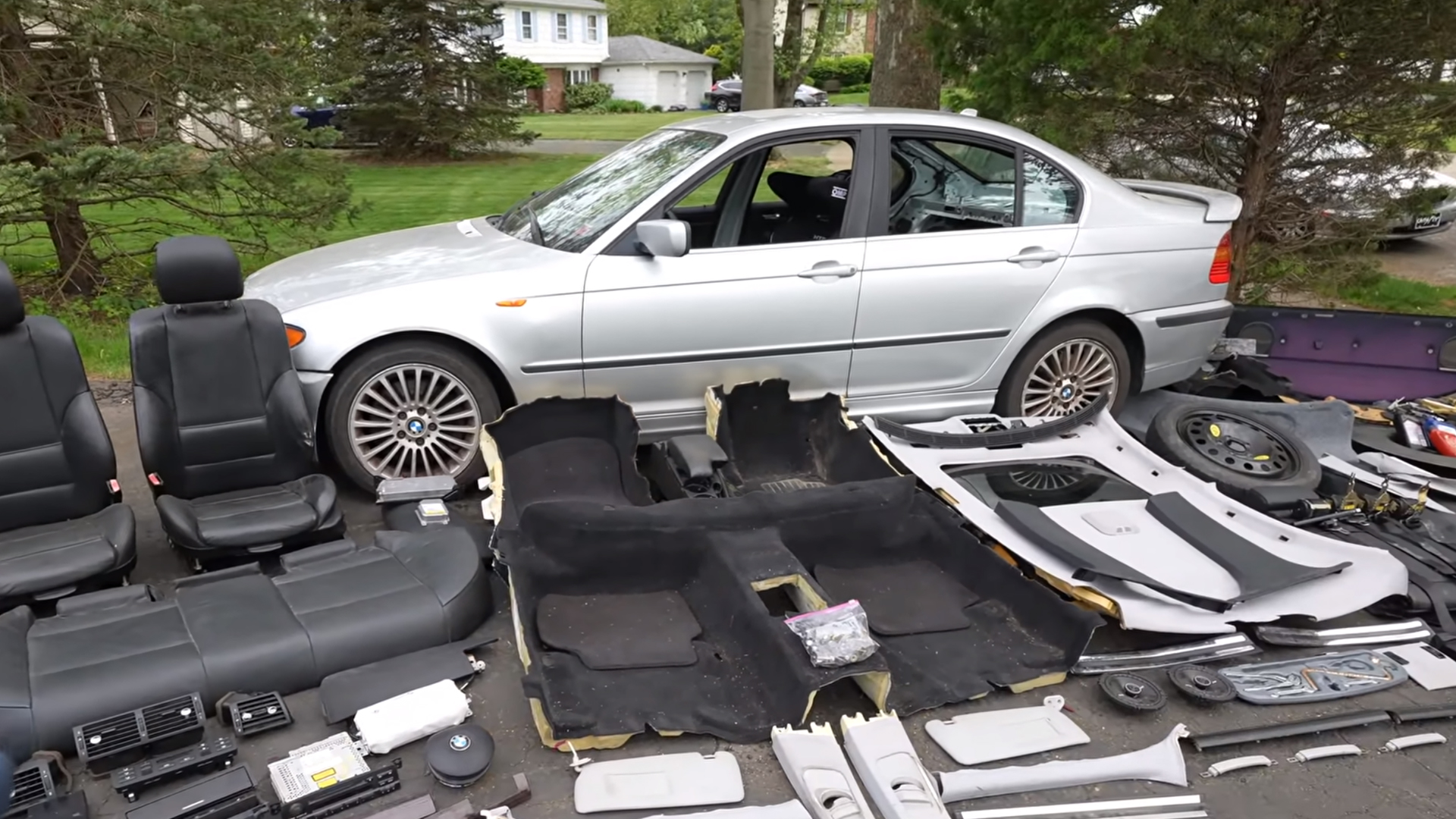

If you’ve ever driven a Mazda Miata, you understand how carrying less weight can affect virtually every aspect of a car. From accelerating to braking and handling around corners, a lightweight vehicle simply does it better. I don’t think I need to go into the details of why; just know that you have physics to thank for it.
YouTuber ChrisFix decided to test this theory and figure out just how much weight he could save by gutting the interior of an E46 BMW 330xi he’s transforming into a dedicated endurance racer. This meant running some quick before and after acceleration and braking tests, as well as weighing each part he removed from the vehicle. The results were predictably better.

Chris explains that the E46 will eventually be entered in a 16-hour endurance race. One requirement dictates that he needs to have a fabricator weld in a rollcage; this meant removing anything flammable or potentially obtrusive from the vehicle, which pretty much translates into removing the entire interior. But before Chris did that, he put the luxury sedan on race scales to get an accurate curb weight, and then he sent it to the track for some basic benchmarking.
The 330xi clocked in at 3,370 pounds with a quarter-tank of fuel. Its zero to 60 sprints averaged out to around 6.8 seconds, and the results of a 60 to zero stop test worked out to around 170.6 feet.
For what it’s worth, the 330xi was one of the top-trimmed 3 Series of the era, with the “x” designation in the name signifying that it’s equipped with BMW’s all-wheel-drive system. In fact, it was bested only by the 330Ci ZHP and performance-oriented M3 in the 3 Series lineup then. The 3.0-liter inline-six produced about 225 horsepower and allowed the car to sprint from zero to 60 miles per hour in about 6.9 seconds, according to the factory. Needless to say, despite ChrisFix’s car having 250,000 miles on the clock, it definitely didn’t lose the pep in its step based on his tests.


Now that Chris had some baseline specs to work with, he set on with his goal of getting the car under 3,000 pounds. The heaviest set of items came out first: the seats. The two front seats and rear bench weighed in at a whopping 180 pounds, making up a significant chunk of the weight lost during the project.
Next, he removed everything out of the trunk including the carpet, spare tire, factory toolkit, and amp to get an additional 75 pounds back. The battery was separate, as the 45-pound BMW behemoth would be replaced with a more lightweight 12-volt battery.
The interior trim, headliner, seatbelts, center console, passenger airbag, and dashboard components were removed to save 73 pounds. Meanwhile, the sunroof and motor (which was replaced with a fiberglass delete panel) netted another 32 pounds. The carpet, insulation, and sound deadening material also made a pretty sizable difference at nearly 70 pounds, while perhaps the most surprising of all was the five pounds of fasteners used to hold it all together.

By the time Chris had his new racing seat and sunroof delete kit installed, the final weight of the car came in at 2,940 pounds, which equals a 430-pound drop. Impressively, this 12.8-percent improvement led to some solid results. The car’s zero to 60 time dropped to 5.97 seconds (a 0.8-second improvement) and the braking distance dropped to just 141.2 feet.
While it isn’t advisable to do something like this to your daily driver, it certainly shows the direct correlation between a vehicle’s weight and the speed at which it can accelerate and decelerate. As for a track car, where weight transfer can easily translate into the ability to maintain grip around a turn, go ahead, do it. Just make sure to be in-spec with safety rules because agility doesn’t matter if you can’t qualify.
Got a tip or question for the author? Contact them directly: rob@thedrive.com